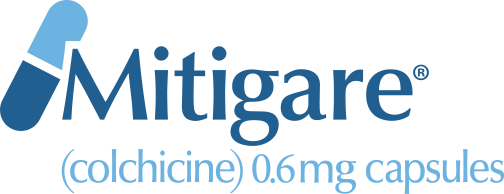
Gout is becoming increasingly common in the US.1 About 6 million men and 2 million women in the US suffer with it2, and incidence of the disease has more than doubled over the past 20 years1. As the number of adults affected by the disease increases, so do gout management costs, which is why prevention is so important.
A form of inflammatory arthritis, gout is caused by a build-up of uric acid in the body.3 This build-up of uric acid can lead to deposits of urate crystals around the joints.3 Once they form in the joints, these crystals can cause redness, swelling, tenderness and intense pain.3
Growing concerns
The increasing prevalence of gout is likely due to the fact that the population is aging.4 Diet and lifestyle also are believed to play a role.4 This increase, coupled with the fact that people with gout are more likely to suffer with other chronic conditions (high blood pressure, diabetes, kidney disease, high cholesterol and obesity, for example), represents a significant public health concern.1
Downplaying a serious disease
Although it is very important to manage gout, many people with the disease do not take it seriously.5 In fact, a survey conducted by the Gout and Uric Acid Education Society showed that, although nine out of 10 people with gout feel that it is a serious health issue, only half agree that managing gout should be a priority.5
Doubling doctor visits
From 2002 to 2008, an estimated 7 million doctor visits annually were associated with gout; 2 million of these being the result of gout flares.4 Although the total number of office visits for all causes was the same between 2002 and 2008, the number of gout-related visits more than doubled (14.9 visits per 1000 persons in 2002 to 35.2 visits per 1000 persons in 2008).4
A hefty price tag
As the number of adults affected by gout increases, so does the cost to manage the disease.4 According to data from the 2002 to 2008 National Ambulatory Medical Care Survey and the National Hospital Ambulatory Medical Care Survey, total outpatient care costs associated with gout were estimated at $933 million annually—a critical reason why gout flare prevention is so important.4
How can we reduce costs?
As the costs associated with gout continue to rise, it will become increasingly important to find ways to manage them.6 Potential strategies for improving outcomes while decreasing the financial burden to patients include:
Get diagnosed early
If you think you could have gout, or are experiencing gout-like symptoms, seek diagnosis and begin treatment as soon as possible, including doctor-recommended therapy to help avoid future flares.7
Keep uric acid in check
Have your uric acid level checked every six months, ideally keeping it below 6 mg/dL.7
Live well
Maintain a healthy lifestyle by exercising regularly, avoiding alcohol, choosing gout-friendly foods and staying well hydrated.7–9
Talk with your doctor
If you suspect you have gout, make an appointment with your doctor as soon as possible.3 You may want to download and complete the Gout Flare Questionnaire (from Resources for Patients) before your appointment.
After your initial examination, your doctor may want to refer you to a rheumatologist (a specialist who focuses on patients with arthritis and other inflammatory joint conditions). But don’t wait—untreated gout can become increasingly painful and result in joint damage.3
If you are already being treated for gout but are still experiencing frequent symptoms, including flares, see your doctor or rheumatologist as soon as you can. Your gout could be progressing and it may be necessary to change your treatment plan.
NOTE: This article was not written by a medical professional and is not intended to substitute for the guidance of a physician. These are not West-Ward’s recommendations for gout flare prevention, but rather facts and data collected from various reliable medical sources. For a full list of resources and their attributing links, see below.
